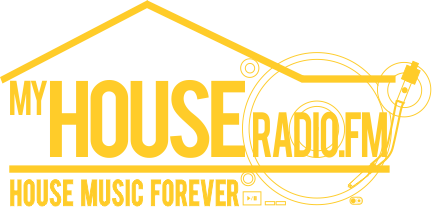
You can’t write a credible history of dance music without Beppe Loda. The Italian producer emerged in the early 1980s behind the decks as resident and main attraction at Club Typhoon, a former cinema transformed into a discotheque. His sets were so popular that the club reputedly attracted more patrons than the entire population of Manerbio, the town near Milan where it was located.
Though he had been DJing since 1973 (pre-dating beatmatching altogether), it was at Club Typhoon that Beppe Loda developed what would become known as the syncretic style known as “Afro,” sometimes called “Afro cosmic,” “Afro cosmic disco” or simply “the cosmic sound.” Though he has had a reluctance to slap a new tag on a style that transgressed every genre in existence, the name was based upon his recognition of the common factor underlying all the eclectic music he was playing. “I realized, when you think about it, almost all the music we were playing had African roots,” he told Jeremy Campbell in a 2006 interview. “People kept asking me, ‘What do you call this melting pot of music?’ I connected the dots and my Afro series of mixtapes was born.”
Those mixtapes became a phenomenon in Italy when not just the sound but even the word “mixtape” itself was still new. Since the mid-’00s they’ve been transferred, uploaded, compressed, re-compressed and would turn on new generations to what was going down in Manerbio back in ’82. Today Beppe Loda is revered as one of the pioneers of everything that we would come to love about the culture and craft of DJing — widely praised for his integrity and a boundless sense of discovery undiminished over the years.
Beppe will be visiting Chicago in January — on January 27 at Podlasie Club and the following night at Queen! at Smartbar (tix). Thanks to Wolfgang Amadidas for setting up this interview, which was conducted in Italian and then translated into English by Tommaso Conforti for 5 Mag.
When and how did music enter your life and when did you feel that becoming a DJ/producer was essential?
My very first record dates back to 1970 when I was 13: a 45 of “Venus” by The Shocking Blue. My mother gave it to me along with a turntable. After that, I collected more 45s, but my first LP was Live Peace in Toronto by John Lennon/Plastic Ono Band, followed by Santana 3, Ten Years After Undead, and Rare Earth In Concert.
How did you get your first “gig” and where did it take place?
Late 1973. Kinky was a little club in downtown Manerbio where I got regular gigs on Friday, Saturday and Sunday afternoon and night. It was a nice place to play, filled with a lot of people who enjoyed their time there very much. The owners, Tony and Oreste, were very cute and trusted my “revolutionary” musical selections in full.
What was the specific influence of America and other foreign cities on your musical choices and productions?
I love the United States, it was my source of inspiration at the beginning. One of those first records when I was 13 was Rare Earth, then of course Woodstock and so on until i started my experience as a DJ at around 16 years old. So American music accompanied me with funk, soul, R&B, disco, blues in my sets, and with rock and other American musical forms that I usually listened to and which were very educational for me.
Dusseldorf and Berlin follow (the two main schools of German electronic music) and Athens/Paris with Vangelis, but then in reality there are many others.
Was it easy to follow DJs outside of Italy?
No, it was not easy, there was no internet so we knew nothing about what other DJs were doing around the world. My first outing abroad was in 1984 in Innsbruck, Austria, following the great success I had achieved creating the Afro style.
How would you explain to today’s generation what a club was like and what the atmosphere was like when you started?
It all reduces to one word: fun!
What is your opinion on today’s party culture?
I can only refer to the music that I propose in this period, i.e., spaghetti disco (Italian disco of the ’70s.) Really catchy music and above all very funny, and therefore parties respect this basic criterion: fun!
What is your favorite club you have played at and why?
Today there are many of them, but historically the club where I have been able to express myself in my most alternative form is the Typhoon club, where I concretized many of my innovative, musical and artistic, and also organizational ideas.
How often do you go to buy records? Was it cheaper once?
When it happens I still like to go in search of things I don’t know (I consider myself an archaeologist of music.)
Yes it was once very convenient and you could find much more material. An example: In 1992 I came to the States for vacation and to look for rare Black music things… I bought about 800 records that I didn’t know. America for me has always been like a (musical) paradise.
Do you think there is too much choice now?
More than too much choice, there is little quality choice.
How has Italy been fundamental in the evolution of electronic music?
As regards Italian electronic musical research, the RAI experimental center (national Italian radio television) with Luciano Berio was fundamental. Of course the most modern and melodic Italian electronics are inspired by the classical German artists — see Conrad Schnitzler, Klaus Schulze, Udo Hanten, Harald Grosskopf (with whom I collaborate from time to time), Edgar Froese, to name a few, without forgetting the Americans, Mort Garson and Tonto’s Expanding Head Band and of course Robert Arthur Moog (inventor of the Moog).







Leave A Comment
You must be logged in to post a comment.